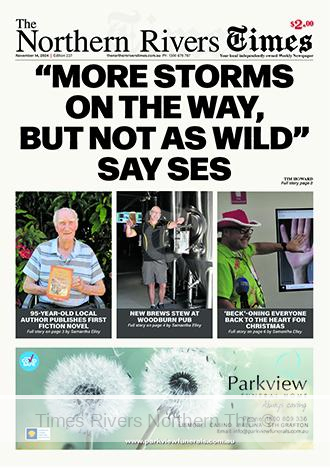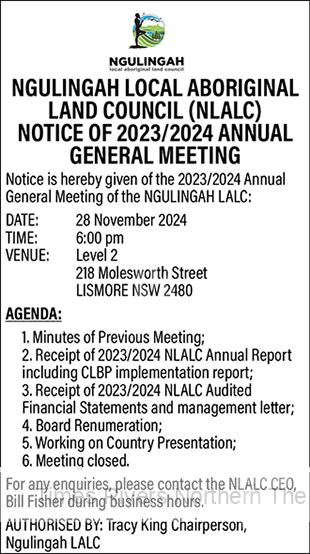THIRTY-ONE YEARS OF SOLVING AND PREVENTING CRIME
Detective Chief Inspector of Tweed-Byron Police District Luke Arthurs is honoured for his service
By Sarah Waters
When Luke Arthurs graduated from The NSW Police Academy at Goulburn in 1990, he was given a six-shot handgun, a baton, a pair of handcuffs and sent out to serve the community as a probationary constable.
The bright eyed 18-year-old wasn’t sure where he was going to end up, but he had a desire to help people and work in an environment where no two days were ever the same.
Thirty-one years later, he has retired as Detective Chief Inspector of Tweed-Byron Police District and was recently honoured for his years of distinguished service.
His extensive career has taken him across NSW where he has helped to solve, and prevent, some of the state’s biggest crimes.
“As an 18-year-old who had just left school, I didn’t really know what I was doing,” Mr Arthurs said.
“But I caught on pretty quickly and I started to enjoy investigating serious criminal offences.
“As my career progressed, I don’t know how this happened, but I actually ended up being quite good at what I did,” he said.
Mr Arthurs gained his initial policing experience as a constable in Wentworthville, Sydney.
The police station only had one electric typewriter and crimes were solved without the help of the internet, CCTV footage, forensic DNA analysis and satellites.
An interest in detective work led Mr Arthurs to the Blacktown District Special Operations Group a few years later.
It was the early 1990s and a heroin epidemic was gripping Cabramatta, in Southwestern Sydney.
A young Mr Arthurs could easily pass as someone who was involved in the drug market at the time.
He went undercover and arrested street dealers for the sale and supply of heroin.
“I used to borrow my younger brother’s clothes to change my appearance and dress style daily,” he said.
Even when dealing with petty crimes as a police officer and trainee detective in Nowra, situations could ‘evolve quickly’.
In the remote suburb of Bomaderry, Mr Arthurs and his police partner came across five young people tearing down a street sign.
The two police officers confronted the offenders only to be attacked minutes later.
Armed with just a baton and portable radio, Mr Arthurs called for urgent backup, but the nearest car was an hour away.

Luke Arthurs first joined the NSW Police Force in 1990
“I ended up holding four of them back from me with my baton, but I knew we wouldn’t last another 10 minutes before we were both overpowered,” he said.
“I requested an officer and radio operator (civilian) both at Nowra Police Station come in marked police cars with lights and sirens on to assist.
“Luckily the four that surrounded me backed off and began walking away when they saw the two police cars coming.
“I went to my partners aid and the male he was wrestling with on the road was arrested.
“You really need to be able to think on your feet, because you not only have to protect the community you have to protect yourself and your partner.”
Mr Arthurs transferred to Sydney in 1997, which was the robbery capital of the Southern Hemisphere at the time.
He spent nine months with the Homicide Squad investigating the murder of a man near Sydney Central Railway Station.
Afterwards, he returned to Sydney City Police Area Command and was appointed head of the robbery unit.
He solved many high-profile cases.
“There was a serial armed robber in Sydney, who was following females through Darling Harbour in the darkness and robbing them at knife point,” he said.
“He got charged with 18 offences, convicted, and put in jail.
“There was another one, targeting women working in clothing stores … he was robbing them of their floats for the day, he got charged and was convicted of about 16 offences,” he said.
In 2001, Mr Arthurs was given the case of a 17-year-old girl who was sexually assaulted on Dee Why Beach in Sydney.
It was a case he spent 12 years working on and with the help of DNA analysis he eventually identified the offender.
The advancement of DNA technology in early 2000, also helped to solve many cold cases, he said.
“The good thing about the NSW Police force is they kept all the DNA on record and as technology evolved, they were able to go back and make more matches to people’s DNA.
“To where it was in 2000 to the current day is years apart – you can get DNA off pretty much anything these days.”
After leading undercover crime teams as a detective sergeant, and later a detective inspector, at different locations throughout NSW, Mr Arthurs transferred to Manly Police Command in 2010.
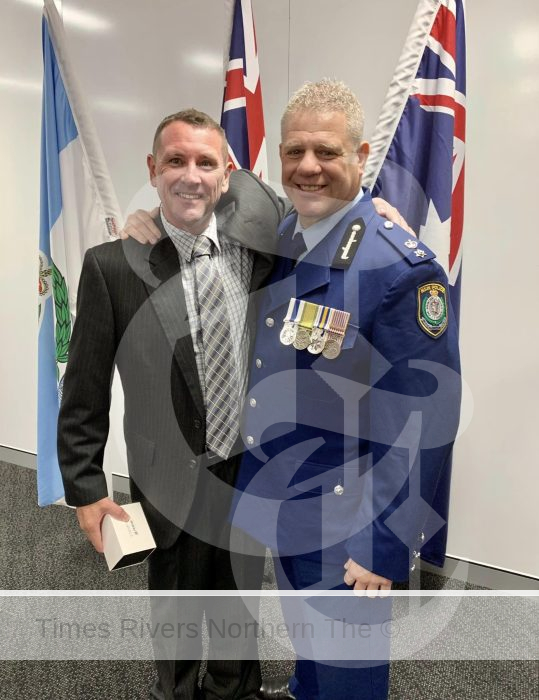
Retired Detective Chief Inspector Luke Arthurs and Superintendent David Roptell
As Crime Manager and Detective Inspector Mr Arthurs played a key role in transforming Manly’s culture of high crime, fuelled by alcohol and drugs, into the safe and family-friendly coastal suburb it is known as today.
His expertise eventually led him to the Tweed-Byron Police District, which he joined as Detective Chief Inspector in 2017.
He recalls a few stand out moments, including the time he led a month-long drink and drug driving blitz, where officers caught 11 drink drivers in one week alone.
He also recalls the time he had to close down the Mullumbimby CDB and evacuate the Byron Shire Council chambers when a pipe bomb was found.
But, simply protecting the community and working with them to help solve crime, which he set out to do from the start, has given him the most fulfilment in his career.
“I’ve got no regrets – I can’t say I loved every bit of it, but the majority of the time it was fantastic,” he said.
“Of course, there are things you don’t want to see and there are things you don’t want to tell people – it’s a tough job, but it has given me a very rewarding career.
“I went from being a young school leaver to a fully qualified detective chief inspector.”
Mr Arthurs was honoured at Tweed Heads Police Station with a March Out Parade for his 31 years of service on September 8.
The occasion was attended by Superintendent David Roptell and Mr Arthurs friends, family and colleagues who recognised his significant contribution to the NSW Police Force.
For more local Byron Bay news, click here.





 Tweed Shire News2 years ago
Tweed Shire News2 years ago
 Motoring News2 years ago
Motoring News2 years ago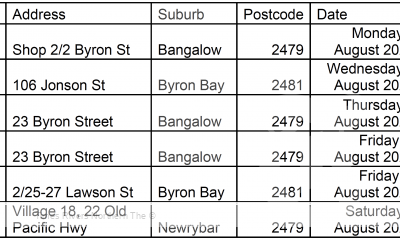
 COVID-19 Northern Rivers News3 years ago
COVID-19 Northern Rivers News3 years ago
 COVID-19 Northern Rivers News3 years ago
COVID-19 Northern Rivers News3 years ago
 Northern Rivers Local News3 years ago
Northern Rivers Local News3 years ago
 Health News3 years ago
Health News3 years ago
 COVID-19 Northern Rivers News3 years ago
COVID-19 Northern Rivers News3 years ago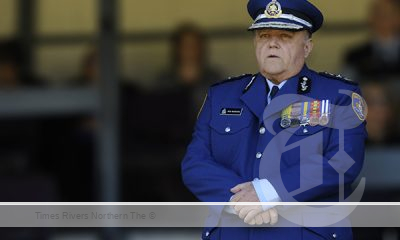
 NSW Breaking News3 years ago
NSW Breaking News3 years ago




















